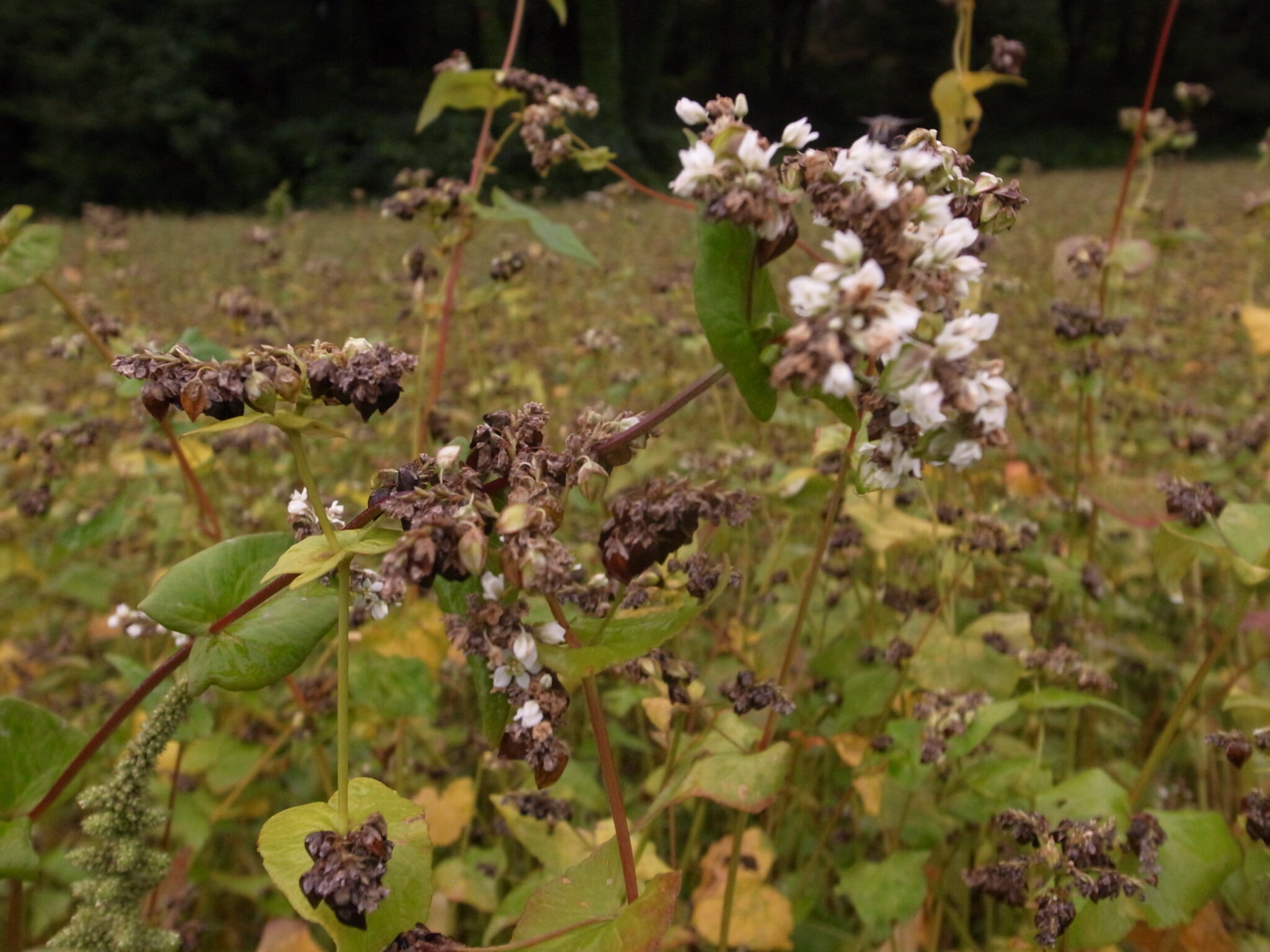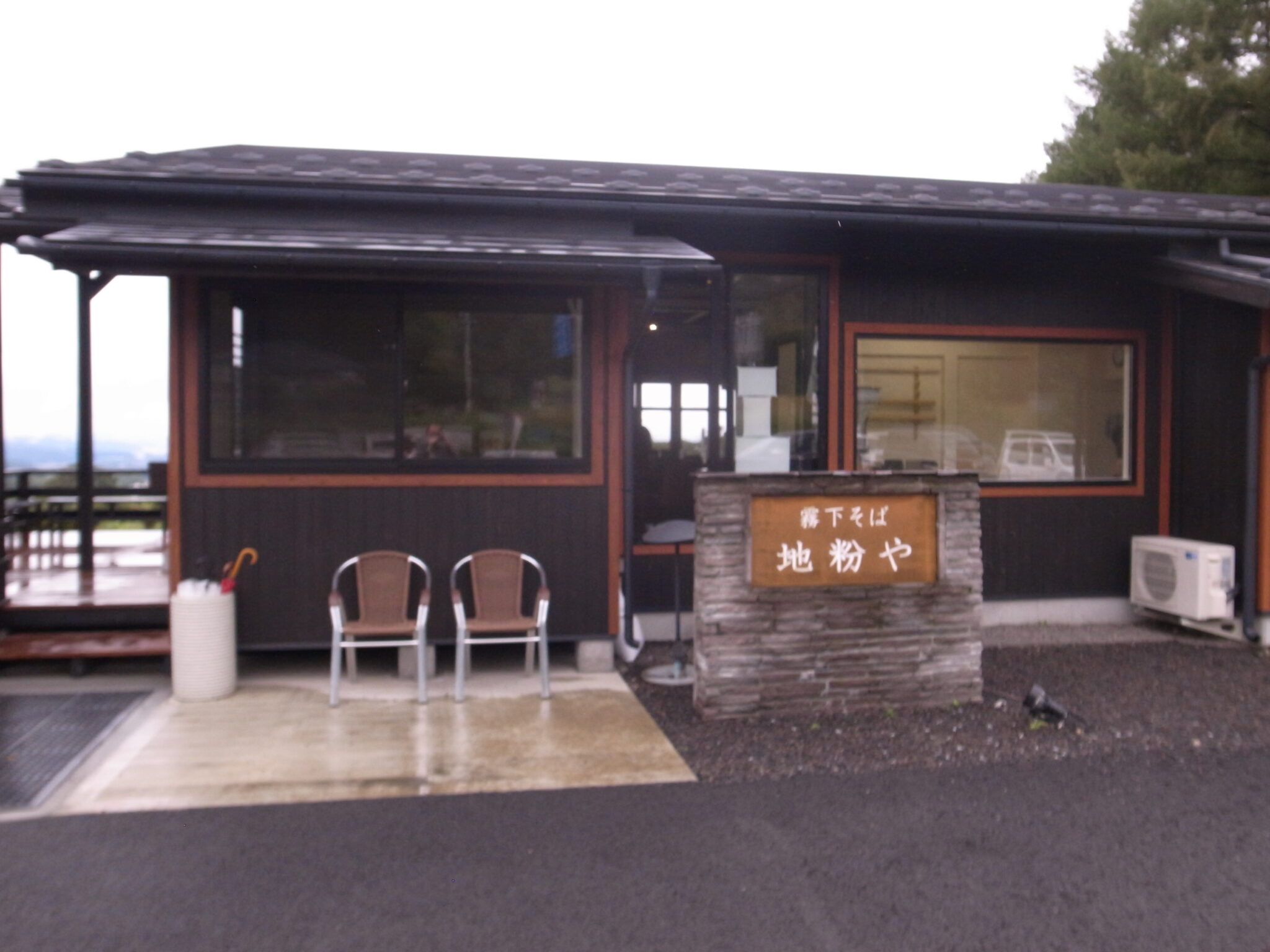A month or so ago the owner of Lapin, bistro type restaurant in Nakakaruizawa where we had dinner, recommended a couple of soba restaurants he liked. One of them was a bit out of the way, so we had to wait until we returned this past weekend to drive out towards the city of Komoro to try Kirishita Soba. Actually, the full name is Jigonaya Kirishita soba (地粉や 霧下蕎麦), the name meaning something like locally produced soba made kirishita, or below the fog, style. It was a rainy day, with plenty of low clouds hiding the hills to the north of the restaurant, fitting weather for eating krishita soba. The restaurant is just west of Daiasama Golf Club on the Asama Skyline road, which we had driven over a couple times recently, once on our way to hike Asama Yama (Mount Asama), the other earlier that morning while looking for the site of the now being built new iteration of Karuizawa Whisky’s distillery.
After visiting Komoro Castle and walking around in the rain, we started heading back towards Karuizawa, stopping first by Karuizawa Brewing for a look only to discover tours were by reservation only and offered only at certain times of the day. Not wanting to wait forty-five minutes, we got back in the car and headed towards a lunch of soba, arriving fifteen minutes before last order for lunch, 2:00.
While we were waiting to be seated the soba maker was working away behind glass in the soba room, measuring what looked to be 1.5 kg batches of ni-hachi (2-8 ratio of wheat flour to soba) soba, then kneading it before rolling it thin and cutting it. When I asked my observations proved correct; it was indeed 1.5 kg batches of ni-hachi soba he was making.
Although there were tables under cover on the patio outside with a nice view of the Saku Valley in the distance, we sat at a table indoors next to the window where it was much warmer. Next to us was aa family with two young girls, maybe age three or five, who were both eagerly eating the kids soba set. My guess is they were locals as many young children don’t like soba, preferring instead the blander tasting udon.
Although the lunch menu is not too extensive, it did have just what we wanted; kurumi dare soba (cold soba with a walnut dipping sauce, made with freshly harvested and ground walnuts), and a serving of vegetable tenpura. Although the serving of kurumi dare was adequate for the large serving of noodles, there was also a serving of tsuyu, the dashi rich in katsuobushi shaved that morning while the kaeshi was made with local ji-shōyu.
As we left we noticed a sign explaining the soba was all locally produced, grown on porous volcanic soil with good drainage in a climate with both sun and fog (thus the name kirishita). As we walked outside I noticed a field of soba next door with another across the road. The soba looked about ready to harvest, although that would need to wait a few days after the recent rain had soaked the soba kernels.
All in all, an excellent lunch of the best soba I have found so far in an area famous for soba.


Jigona-ya Kirishita Soba 地粉や (ジゴナヤ)霧下蕎麦
長野県 北佐久郡御代田町 大字塩 520-2